Research Projects:
Characterization and mechanism of action of antibacterial clay minerals and synthetic derivatives; Mycobacterium ulcerans - Buruli ulcer
Overview | Project page
In 2001, a French humanitarian described the use of clay minerals as a therapeutic treatment of Buruli ulcer. Recently, various mineral products marketed for their health benefits have been investigated for their potential antimicrobial properties. However, only a small number of clay products have been shown to be antibacterial and the mechanism of antibacterial activity has been elucidated for very few of these products. Our lab investigates the mechanism(s) by which specific clay minerals can kill bacteria and the feasibility of using natural mineral products as alternative therapies for topical infections.
Assess the broad-spectrum antibacterial effects of specific clay minerals and mineral derivatives
We subjected the two iron-rich clay minerals, which were used to treat Buruli ulcer patients, to broth culture susceptibility testing of antibiotic-susceptible and antibiotic-resistant pathogenic bacteria to assess the feasibility of using clay minerals as therapeutic agents. One specific clay mineral sample, Ag02, demonstrated bactericidal activity against beta-lactamase (ESBL) E. coli, S. enterica serovar Typhimurium, Pseudomonas aeruginosa, and Mycobacterium marinum and a combined bacteriostatic/bactericidal effect against Staphylococcus aureus, penicillin-resistant S. aureus (PRSA), and methicillin-resistant S. aureus (MRSA), while another mineral with similar structure and bulk crystal chemistry, CsAr02, had no effect on or enhanced bacterial growth (Haydel et al. 2008).
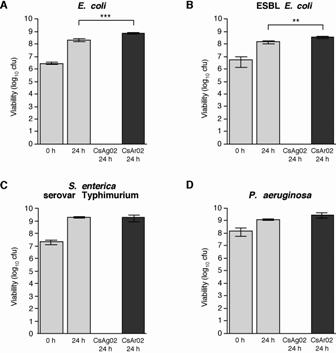
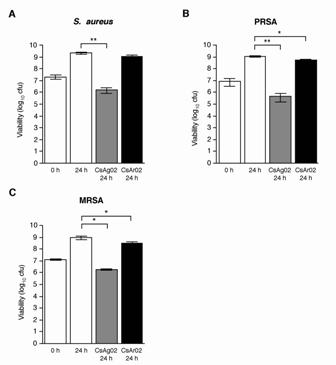
We have screened over 50 clay mineral mixtures sold as health and cosmetic products and identified two additional clay mineral mixtures (arbitrarily named BY07 and CB07) with antibacterial activity, indicating that antibacterial minerals are diverse and that the associated health benefits may be related to bactericidal activity (Cunningham et al. 2010).
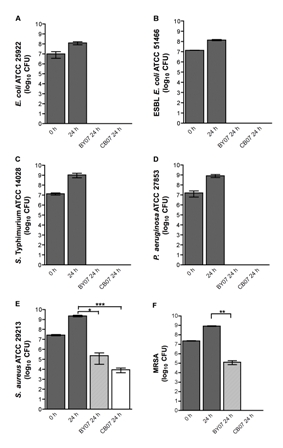
Further investigations revealed that filtered aqueous suspensions (leachates), devoid of all physical minerals, exhibit antimicrobial activity as well, indicating that the bactericidal activity of the clay mineral mixtures was due to chemical as opposed to physical properties of the clay (Cunningham et al. 2010, Otto et al. 2011).
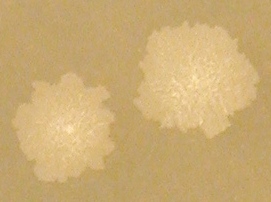
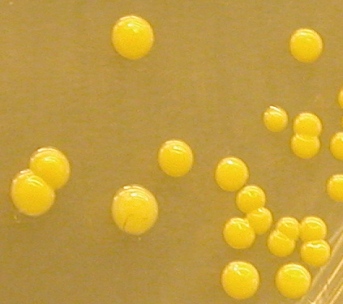
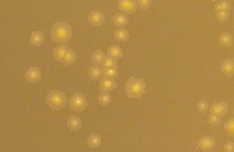
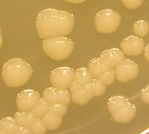
back to top
Determine the mechanism(s) of action of antibacterial clay minerals
We are investigating the possible mechanism by which the clays kill bacteria by assessing potential physical damage to the bacterial cells and cellular physiological damage caused by the chemical properties of the clay minerals.
Scanning electron microscopy (SEM) and transmission electron microscopy (TEM) imaging of E. coli and MRSA revealed intact cells following exposure to antibacterial mineral leachates (Otto et al. 2011). Further investigations revealed that the clay mineral leachate antibacterial mechanism of action differs for Gram-positive and Gram-negative organisms. While overal structural integrity is retained, compromised membrane integrity accounts for bactericidal activity in Gram-positive, but not in Gram-negative bacterial cells (Otto et al. 2011).
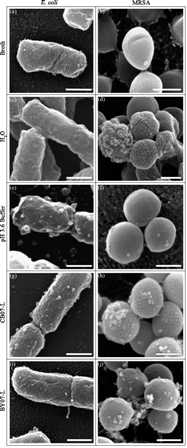
Additional experiments to determine the mechanism of action and to identify the specific cellular targets of antibacterial activity are currently underway.
back to top
Evaluate the effectiveness of antibacterial clay poultices and nanomineral-derived solutions to promote wound healing
The long-term goal of this research is to validate mineral applications for the treatment of Buruli ulcer patients and to develop a new broad-spectrum antibacterial product for cutaneous infections that are difficult to treat due to ineffecient antibiotics, innate or acquired resistance, or the requirement of an extended treatment regimen. Our objective is to evaluate the in vivo efficacy of clay minerals and mineral solutions in the experimental treatment of topical infections.
back to top










